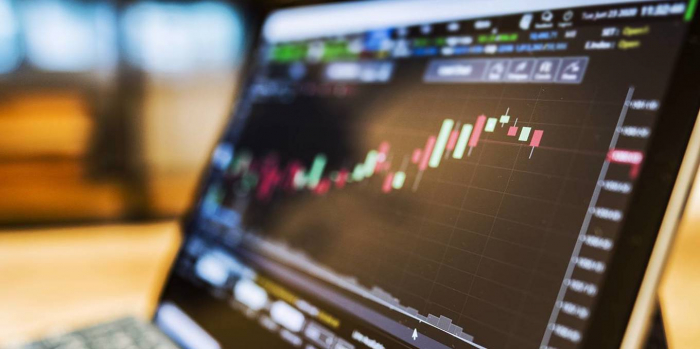by Jim O'neill
Although some recent high-frequency indicators have cast a shadow on what previously appeared to be a robust, rapid recovery from the pandemic-induced recession, there is still ample cause for optimism. But much will depend on how well policymakers in the major economies manage the foreseeable risks.
Since last spring, it has been clear to me that a quick and sizeable recovery would follow from the pandemic-induced recession, owing to Western governments’ massive fiscal- and monetary-policy responses and the high probability that effective vaccines would be forthcoming. And as the scientific evidence in favor of the new emergency-approved vaccines continued to pile up (especially early this year), so, too, did the likelihood of a strong recovery.
As I have noted previously, all of the most reliable high-frequency cyclical indicators have been showing that a rebound is underway. It started in China and then became visible in the United States and the United Kingdom, followed by most of continental Europe. The latest monthly South Korean trade data (released at the start of this month) further reinforce this trend, indicating massive year-on-year growth of 40% – the strongest such gain in at least a decade. Though the annual figure is flattered by the weak base in April 2020, it nonetheless confirms that global trade is recovering strongly.
Notwithstanding the more disappointing high-frequency indicators reported this month in the US – where the April payroll data and purchasing managers’ survey both fell well short of expectations – many sell-side analysts are still revising upward their estimates of 2021 GDP. But what comes next?
One important factor shaping the trajectory of the recovery is of course the share of the world where COVID-19 is still raging. Many developing economies remain under significant stress. India currently epitomizes the problem, though it is certainly not alone. It should now be obvious to everyone that even countries at the forefront of the vaccine rollout – such as my own country, the UK – will not be free of the virus until the entire world population is vaccinated. As we’ve seen in Australia and New Zealand, a country can control the virus (even without vaccines), but only if it is willing to close itself off from the rest of the world – a strategy that cannot be maintained indefinitely.
Meanwhile, in the UK, the arrival of a worrying variant thought to have emerged in India – B.1.617.2 – means that the next couple of weeks will provide vital evidence about the ongoing effectiveness of the AstraZeneca and Pfizer vaccines against new strains of the virus. More such tests, against more variants, are likely in the months, and possibly years, ahead.
Under these circumstances, it cannot yet be said that the recovery is well-founded. However, I am still hopeful, judging by preliminary evidence suggesting the vaccines will still be effective. Moreover, the distribution of vaccines to lower-income parts of the world now seems poised to accelerate considerably in the second half of this year.
Aside from the ever-evolving virus, another growing risk is that financial conditions will tighten. Almost like clockwork, the investment adage to “sell in May and go away” gained salience this month, owing to inflation fears – the flip side of the strong cyclical recovery. In the US, consumer prices in April rose 4.2% year on year, sending jitters through financial markets.
Speaking in unison, US Federal Reserve officials have described the price surge as merely temporary, which suggests that they plan to be cautious about countenancing any change in monetary policy. But many market participants are not convinced that the Fed can forecast inflation more accurately than anyone else can, or that it will continue to stick to its current position.
Are such worries justified? The answer may lie in one other indicator that I have watched for a considerable part of my professional life: the five-year University of Michigan Inflation Expectations Survey. Fed officials themselves often cite this indicator, because it has long tended to be more stable than others. Notably, it has risen recently and thus will need to be watched carefully. If it were to consolidate above 3% or accelerate further, I suspect the Fed might start changing its mind.
Beyond these two near-term factors, there are also considerable structural forces that could influence the quality of this recovery, particularly if certain policy choices exacerbate the threat of inflation. In many Western countries, there is a widespread perception – much of it justified by the evidence – that income and wealth inequality are too high. As such, elected policymakers will be under strong pressure to pursue redistributive policies.
While such policies are warranted, they will need to be properly designed to contribute to, or coincide with, higher productivity in many countries. Failing that, they will raise further concerns in financial markets, where there are already worries about the current levels of government spending.
Given the enormous rallies in bond and stock markets since the spring of 2020, today’s volatility is not surprising. As for those who followed the sell-in-May mantra, they will now be awaiting the St. Leger Stakes horse race in September. According to the adage, that is when the calm is supposed to return.
Jim O’Neill, a former chairman of Goldman Sachs Asset Management and a former UK treasury minister, is Chair of Chatham House and a member of the Pan-European Commission on Health and Sustainable Development.
Read the original article on project-syndicate.org.
More about:
















































